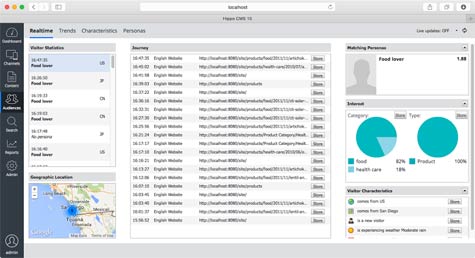Content may be king, but when it comes to serving up content that a specific person might find interesting, most content management system (CMS) platforms are very poor indeed.
Looking to provide organizations with a more precise way of providing the right content at the right time to a specific individual, Hippo today released an upgrade to its namesake CMS platform that borrows personalization concepts initially pioneered by marketing automation platforms.
Hippo CTO Arje Cahn says Hippo CMS 10 is making use of embedded Web analytics to extend the company’s relevance engine to create a Content Performance Platform within the CMS. Via that platform, organizations can keep track of site visitor behavior to personalize the content being delivered by the CMS in real time, says Cahn.
That capability, says Cahn, is provided by invoking a multi-armed bandit algorithm that initially tests content versions delivered in equal proportion. Over time, however, the algorithm adjusts the proportion of content being delivered based on how a website visitor engaged previously served content.
Hippo CMS 10 also sports an upgraded user interface and includes an option that allows developers to make use of its preferred integrated development environment (IDE) to create code, templates, CSS and JavaScript that can then automatically synchronize with the Hippo CMS repository.
To say there’s a lot of frustration with CMS platforms these days is putting it mildly. Not only do most content providers find a CMS cumbersome to use, their ability to target content based on what they already know about visitors to their site using a commercial CMS platform is often fairly limited.
The good news is that marketing automation platforms have taken the ability to target content via analytics to a whole other level. The opportunity now is to apply those same analytics capabilities within the CMS at the exact time a website visitor is looking for content, as opposed to only employing analytics inside a marketing automation platform that tries to entice people back to the site when they are usually busy trying to do something else.




